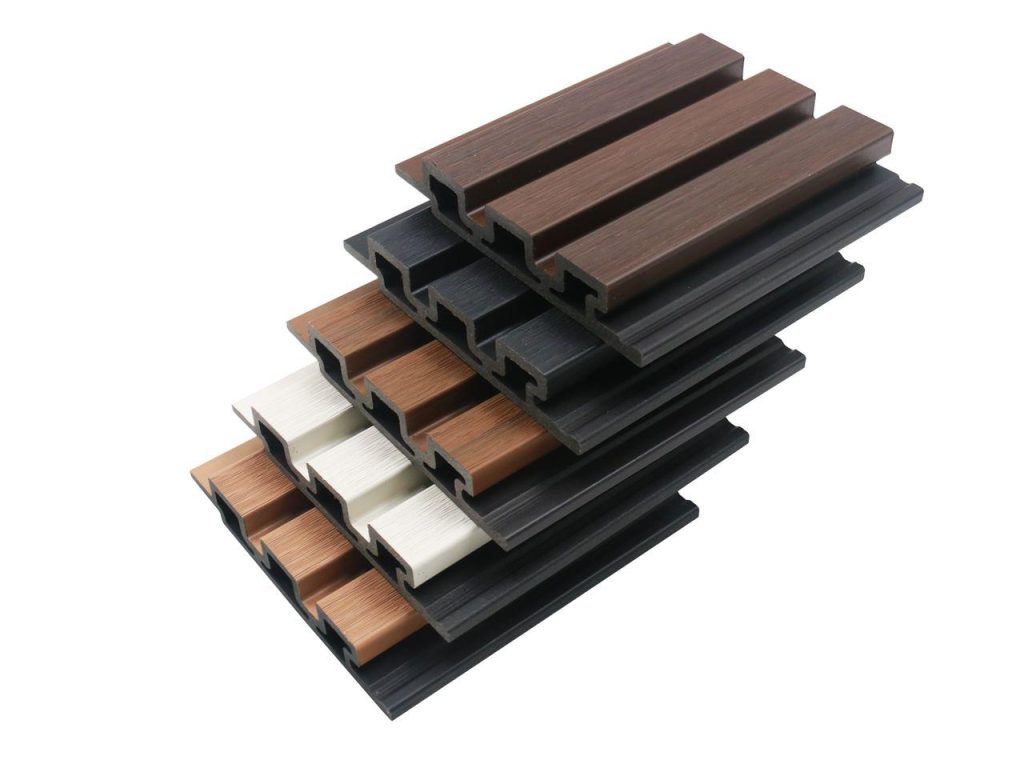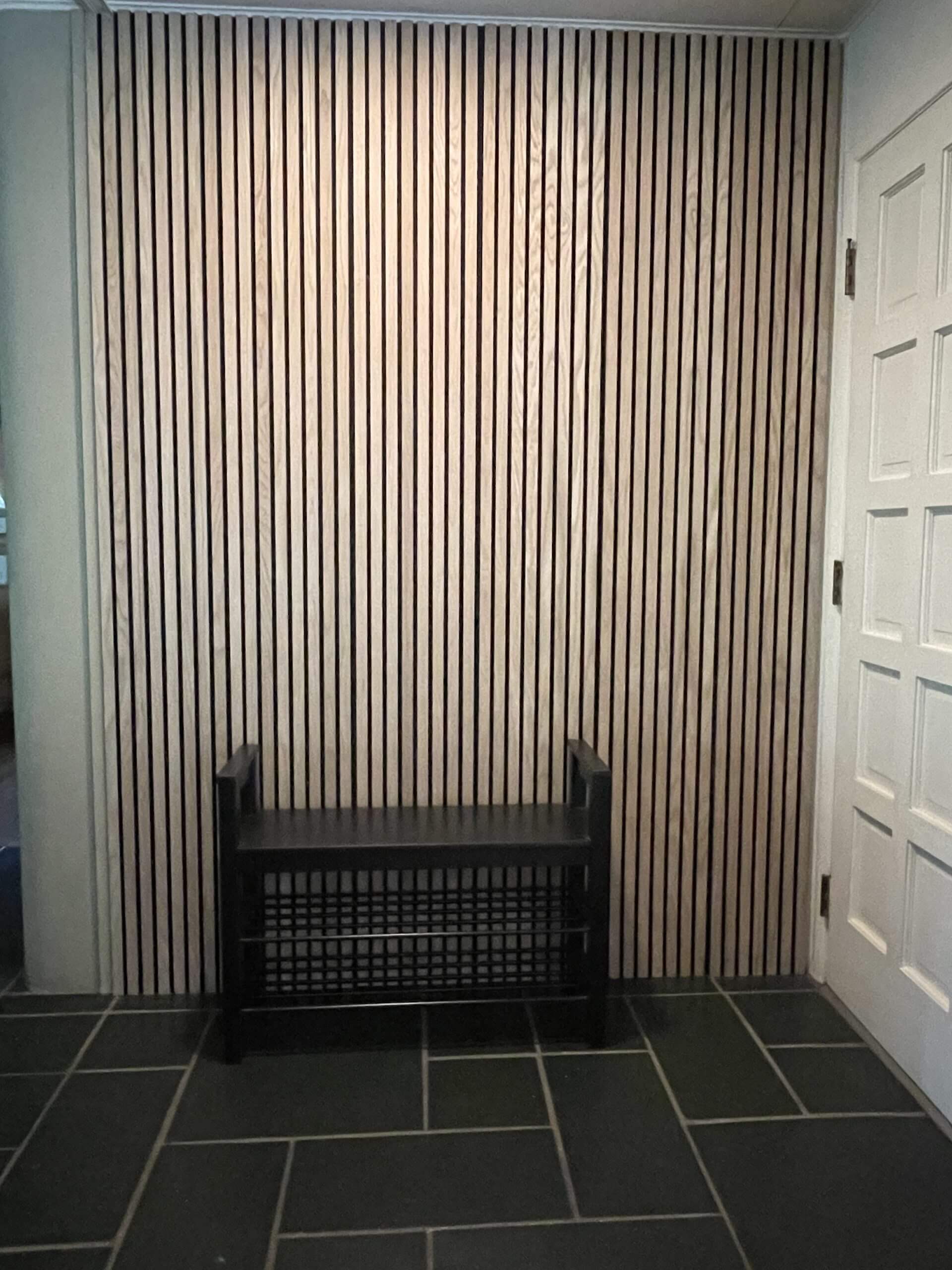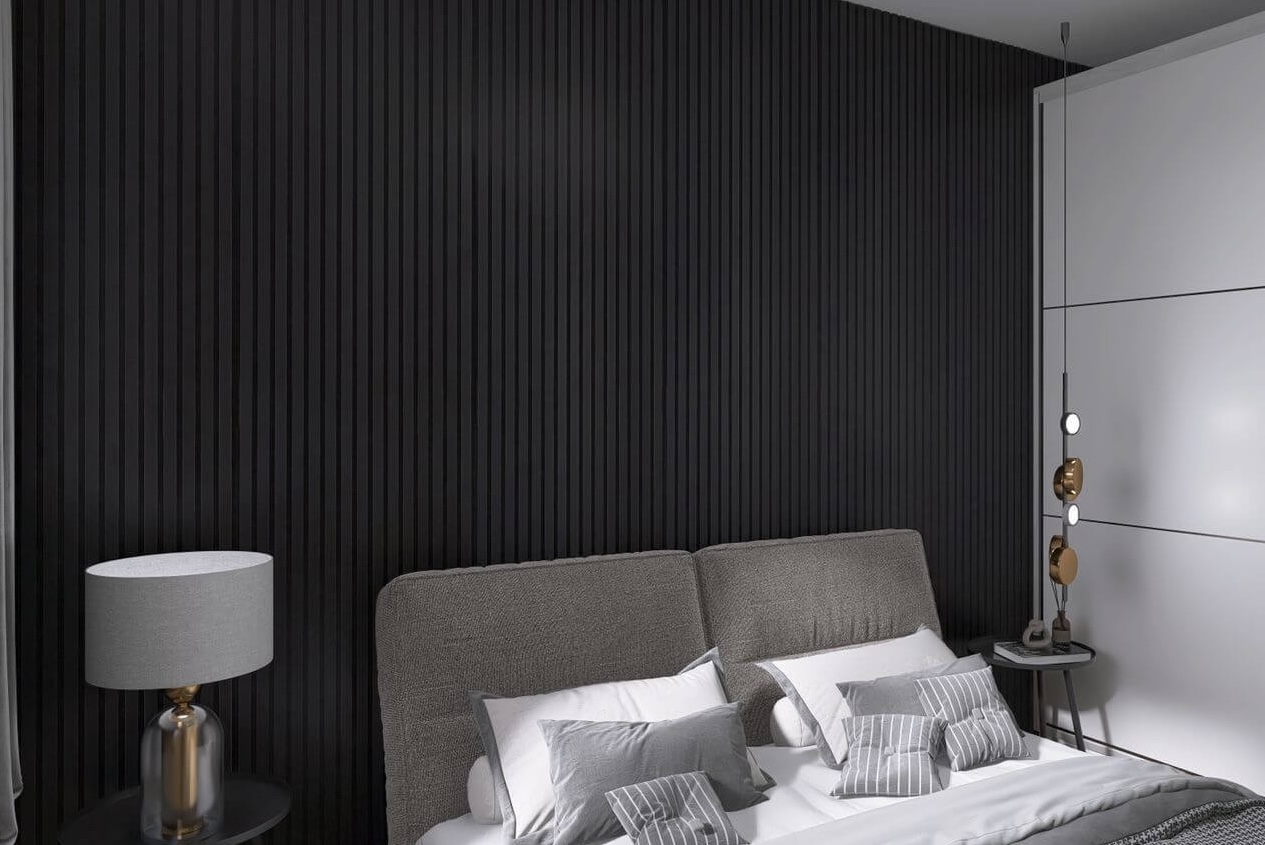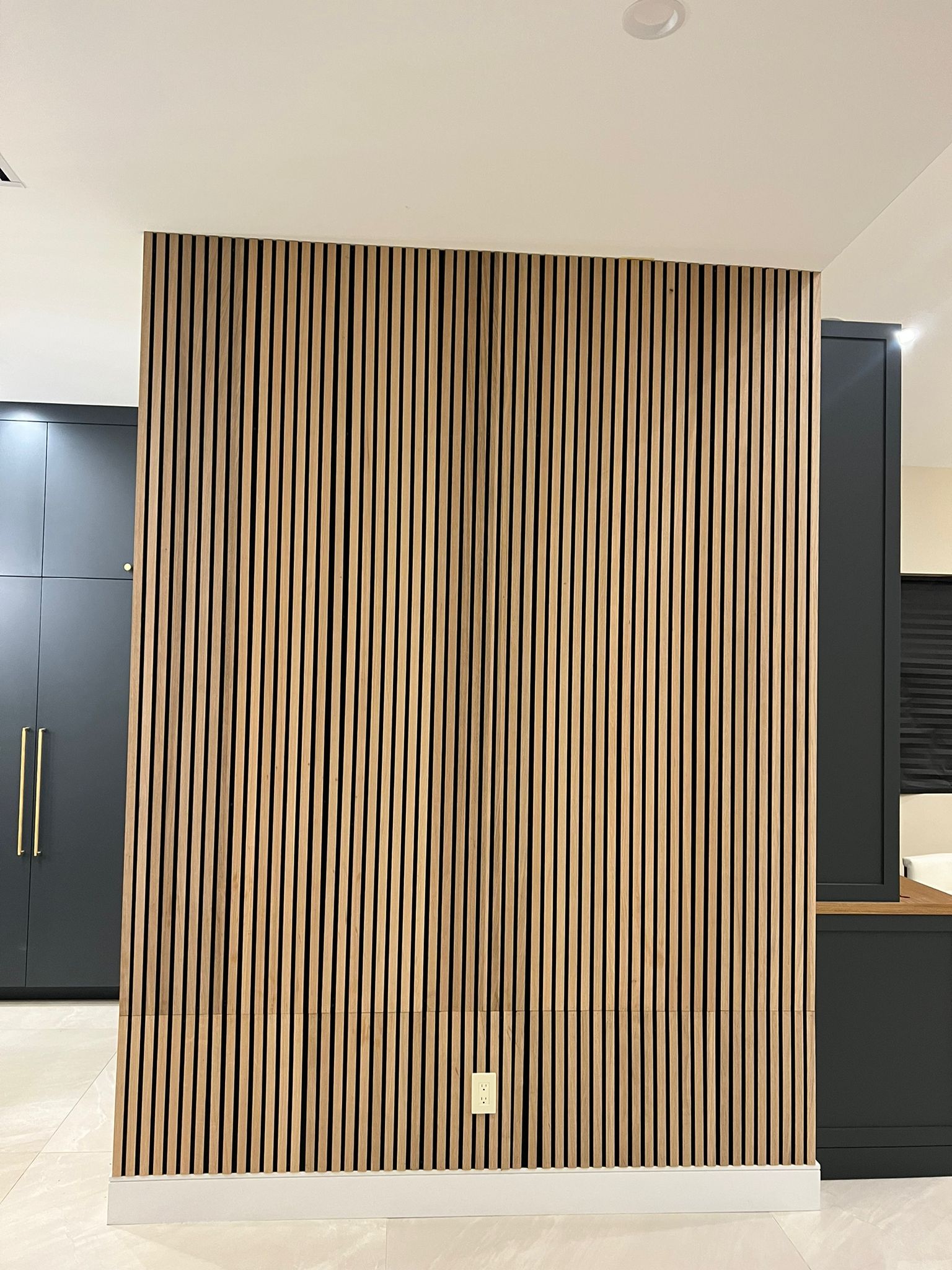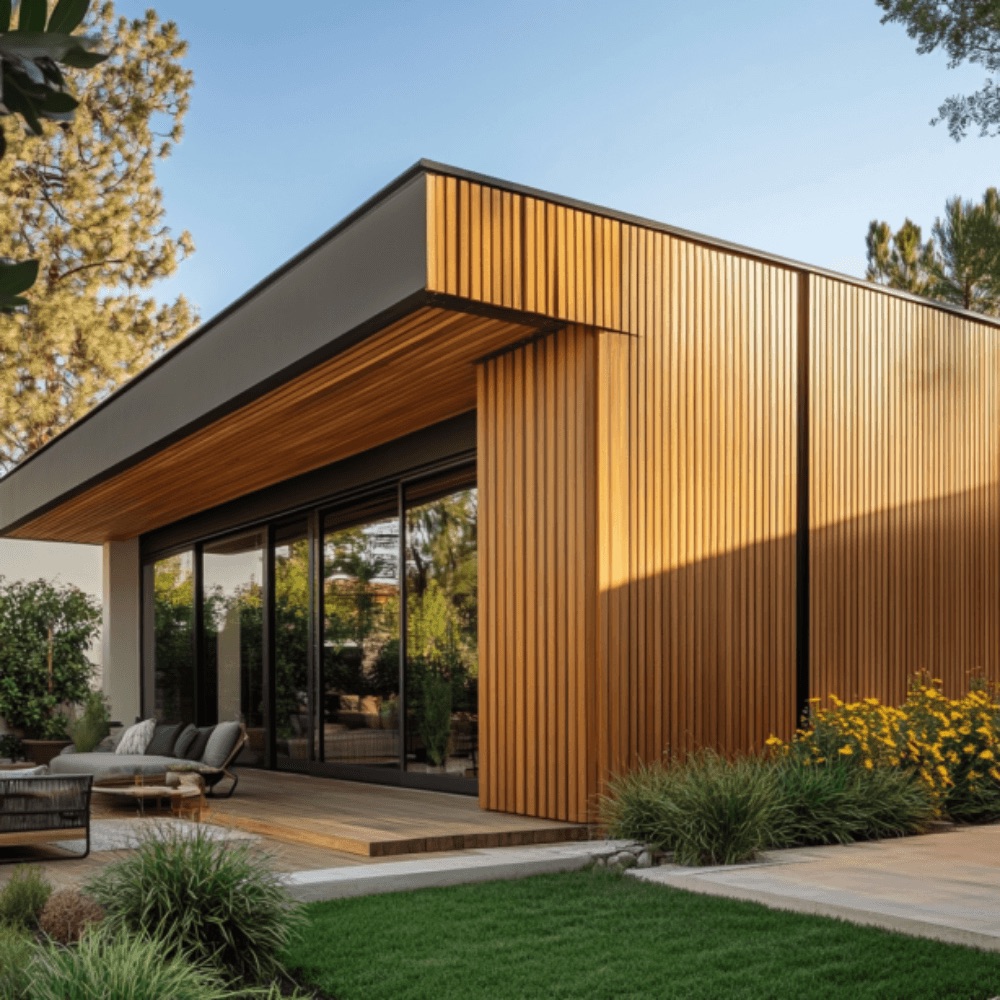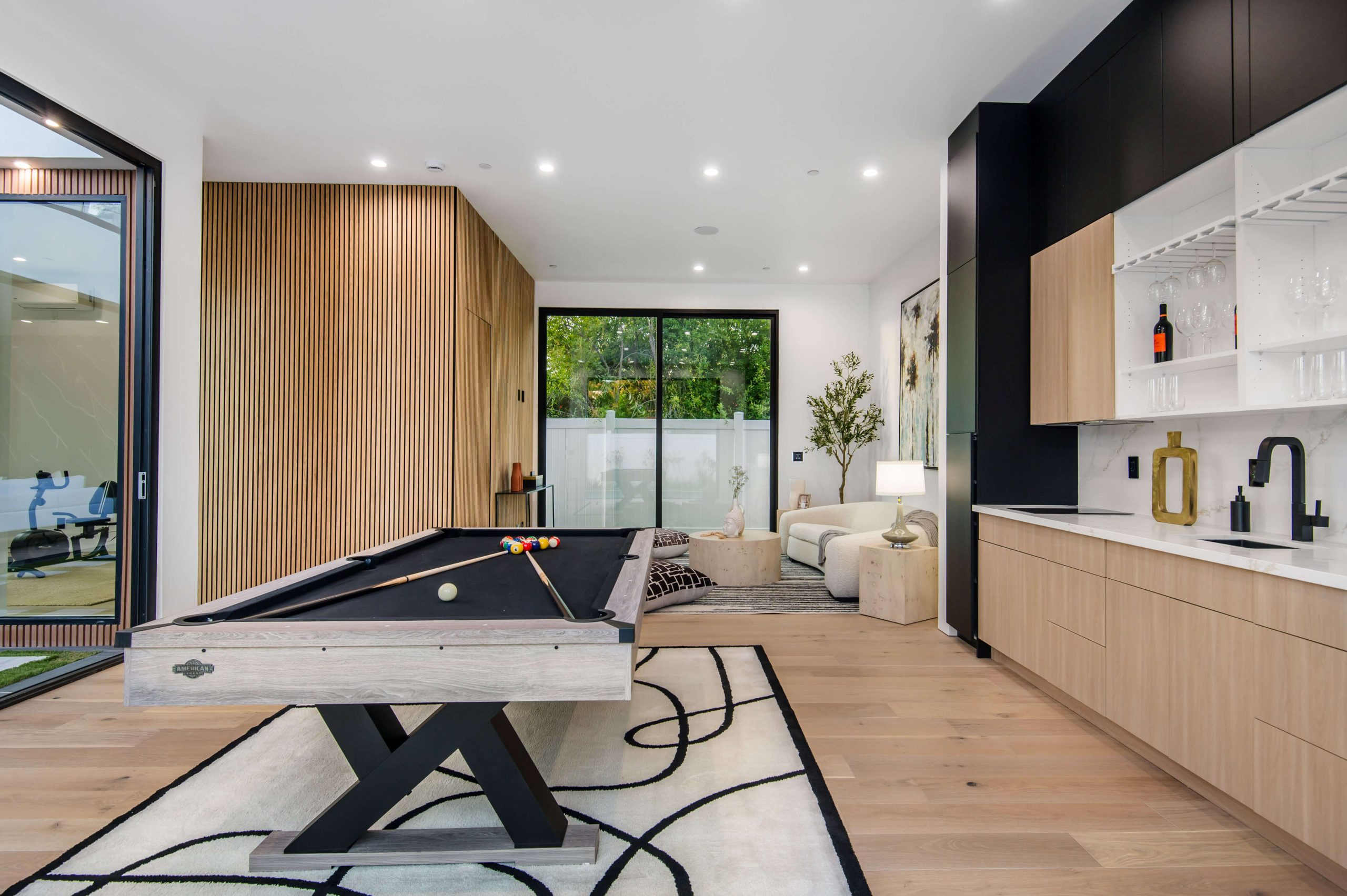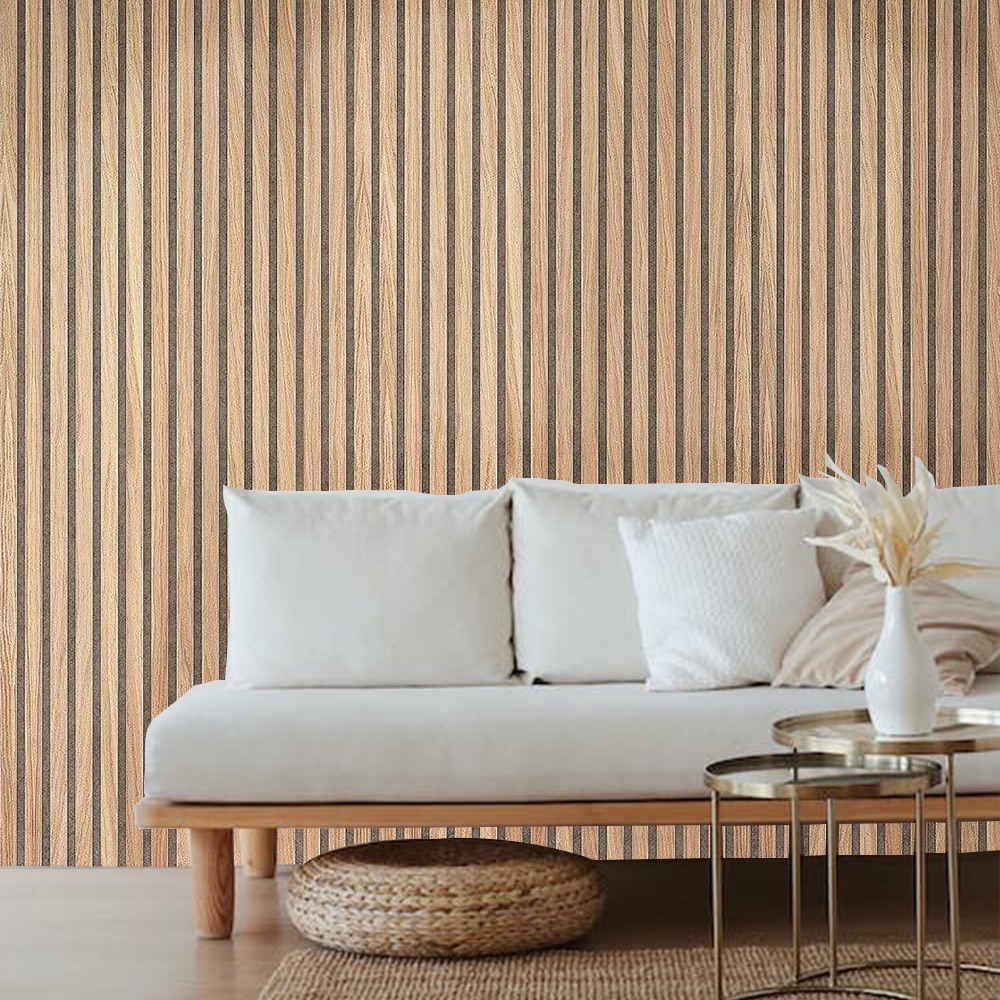Wood paneling has become a popular choice for both residential and commercial spaces, offering not only aesthetic appeal but also functional benefits. Choosing the right type of wood panel can transform the look and feel of a space while adding structural benefits. In this article, we will explore the types of wood panels available, their unique advantages, and how they can enhance your space.
1. Solid Wood Panels
Solid wood panels are crafted from a single piece of natural wood. These panels are commonly made from high-quality timber such as oak, pine, or cedar.
Key Benefits:
- Durability: Solid wood panels are incredibly sturdy and long-lasting, making them ideal for areas prone to wear and tear.
- Natural Appeal: Each panel retains the natural grain and texture of wood, offering a rustic and authentic aesthetic.
- Versatility: Solid wood can be sanded and refinished multiple times, extending its lifespan.
Common Uses:
- Ideal for feature walls in living rooms or bedrooms
- Frequently used in exterior cladding
Solid wood panels offer timeless beauty and strength, making them a staple in home and commercial design.
2. MDF (Medium-Density Fiberboard) Panels
MDF panels are engineered wood products made by breaking down hardwood or softwood residuals into wood fibers combined with wax and resin.
Key Benefits:
- Cost-Effective: MDF is less expensive than solid wood while providing a smooth finish ideal for painting.
- Consistency: Unlike solid wood, MDF has no knots or grain patterns, ensuring uniformity across all panels.
- Moisture Resistance: MDF can be treated to resist moisture, making it suitable for humid environments.
Common Uses:
- Kitchen cabinets and bathroom walls
- Decorative interior wall panels
MDF panels are highly customizable, making them a favorite among DIY enthusiasts and interior designers.
3. Wood Veneer Panels
Wood veneer panels consist of a thin slice of natural wood glued onto an MDF or plywood base.
Key Benefits:
- Aesthetic Appeal: Veneer panels provide the luxurious appearance of solid wood at a fraction of the cost.
- Eco-Friendly: Since veneer uses a thin layer of wood, it reduces the amount of timber needed, promoting sustainability.
- Lightweight: These panels are lighter than solid wood, making installation easier and more flexible.
Common Uses:
- Office spaces and commercial environments
- Interior accent walls
Veneer panels are perfect for those seeking the look of natural wood without the associated price tag or weight.
4. Shiplap Wood Panels
Shiplap panels feature a unique design with grooves that allow the boards to overlap, creating a tight seal.
Key Benefits:
- Easy Installation: The design of shiplap makes installation quick and straightforward, even for beginners.
- Vintage Charm: Shiplap panels add a rustic, farmhouse aesthetic to any room.
- Expansion and Contraction: The overlapping design allows for natural wood movement, minimizing the risk of cracks.
Common Uses:
- Kitchen backsplashes and bathroom walls
- Farmhouse-style living rooms
Shiplap is ideal for homeowners looking to add a vintage or coastal vibe to their home.
5. Tongue and Groove Wood Panels
Tongue and groove panels have interlocking edges, which fit together like puzzle pieces. This design makes them popular for both walls and ceilings.
Key Benefits:
- Seamless Appearance: The interlocking design creates a smooth, seamless finish with no visible gaps.
- Durability: The tight fit between the panels increases structural stability.
- Moisture Resistance: When properly sealed, tongue and groove panels are highly resistant to moisture, making them ideal for bathrooms and kitchens.
Common Uses:
- Ceiling panels in rustic or modern homes
- Accent walls in bedrooms
The ease of installation and clean finish make tongue and groove panels a popular choice for both DIY enthusiasts and professional builders.
6. WPC (Wood Plastic Composite) Panels
WPC panels are a blend of wood fibers and plastic designed for durability in outdoor applications.
Key Benefits:
- Weather Resistant: WPC panels are resistant to moisture, UV rays, and temperature fluctuations, making them perfect for outdoor use.
- Low Maintenance: Unlike natural wood, WPC panels do not require painting or staining and are highly resistant to rotting and cracking.
- Eco-Friendly: These panels are made from recycled materials, promoting environmental sustainability.
Common Uses:
- Exterior siding and cladding
- Outdoor decks and patios
WPC panels provide the perfect solution for homeowners seeking a long-lasting, low-maintenance exterior finish.
Types of Wood Panels
| Panel Type | Key Benefits | Common Uses |
|---|---|---|
| Solid Wood Panels | Durable, natural aesthetic, versatile | Feature walls, exterior cladding |
| MDF Panels | Cost-effective, uniform, moisture-resistant | Kitchen cabinets, bathroom walls |
| Wood Veneer Panels | Luxurious look, eco-friendly, lightweight | Office spaces, accent walls |
| Shiplap Panels | Easy installation, rustic charm | Kitchen backsplashes, farmhouse interiors |
| Tongue and Groove Panels | Seamless finish, durable, moisture-resistant | Ceilings, accent walls |
| WPC Panels | Weather-resistant, low maintenance, eco-friendly | Exterior cladding, decks |
Installation Process of Wood Panels
- Choose the Panel Type – Select the type of wood panel that suits your space and purpose. ↓
- Measure the Wall Area – Take accurate measurements of the wall to determine how many panels are needed. ↓
- Prepare the Wall Surface – Ensure the wall is smooth, clean, and dry before starting installation. ↓
- Install the Panels – Depending on the type of panel, follow the manufacturer’s installation guidelines. ↓
- Seal or Paint (Optional) – Apply a finish if needed to protect the wood and enhance its appearance.
FAQs
1. What is the best type of wood panel for outdoor use?
WPC (Wood Plastic Composite) panels are ideal for outdoor use due to their weather resistance and low maintenance requirements.
2. Can MDF panels be used in humid areas like bathrooms?
Yes, MDF panels can be treated for moisture resistance, making them suitable for bathrooms and kitchens.
3. How do I maintain solid wood panels?
Solid wood panels should be periodically cleaned and, if necessary, refinished to maintain their natural beauty.
4. Can wood panels help with soundproofing?
Yes, many wood panels, especially those with acoustic properties like felt backing, can help absorb sound and reduce noise.
5. Are wood veneer panels eco-friendly?
Yes, wood veneer panels use a thin layer of natural wood, reducing the overall use of timber, which makes them a more sustainable option.
Wood panels are a versatile and stylish option for both interior and exterior design. Whether you prefer the durability of solid wood or the easy maintenance of WPC, there is a type of wood panel that can meet your specific needs and aesthetic preferences.

